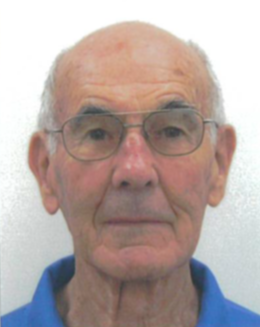Raymond Ralph
(1932-2024)
DSc, PhD, MSc(Hons), BSc, FRSNZ

Emeritus Professor Raymond Ralph FRSNZ
(by Distinguished Professor Bruce Baguley ONZM FRSNZ - an appreciation)
I first met Ray in 1964, when I was being interviewed for a PhD fellowship in what was then called the Department of Microbiology at the University of Auckland. I was just finishing a MSc in Chemistry and my supervisor, Ralph Seelye, suggested that I might pursue a change in research direction to the newly established field of molecular biology. My application was successful and Ray took me on, despite my ignorance of this new but exciting area.
Ray described my proposed project, which was about a substance called transfer RNA. He said that there were three different types of RNA and handed me a textbook on RNA. But this covered only one type of RNA, ribosomal RNA, and Ray explained that the other two types were too recently discovered to be in a textbook. Of the two others, messenger RNA was used to copy the information from DNA onto RNA and transfer RNA was used to translate the RNA code into the amino acid code of proteins. All of this was quite mind-blowing to me at the time but I was carried along by Ray’s enthusiasm.
Ray explained that there was at least one transfer RNA molecule required to deal with each of the 20 amino acids. But every transfer RNA molecule was subtly different from the other molecules. My job was to separate a mixture of these molecules into the individual species! Ray and I worked together on this and I should add that this involved dozens of approaches, most of which failed, and hundreds of discussions!
The most successful approach really utilised physical chemistry. Transfer RNA has a definite molecular structure and this is gradually changed when it is heated. Different molecules change their structures at different temperatures so that at a critical temperature, individual differences in molecular structure can be maximised, leading to an increased ability to separate molecules. This produced several scientific publications.
While this work was going on, Ray and I spent many hours speculating on different aspects of molecular biology, particularly in relation to the behaviour of cancer cells. These discussions led to new publications but importantly for me, laid the foundation for my later career. Ray’s mind was always very active and very flexible, and he was a truly inspiring mentor.
One incident, occurring much later, in 1978, illustrates Ray’s enthusiasm for original approaches to problem solving. By chance I was working in Basel at the same time as Ray, who was working in Lausanne, and James Watson, who had completed his PhD in Auckland just after me and was then working at the Basel Institute of Immunology. Ray decided to drive to Basel in an aging Mini to see us, and I suggested that we all went for a picnic at a castle ruin (Pfeffinger Schloss) above the town of Pfeffingen, near Basel. About halfway up the hill there was a “pop” from the Mini, and investigation showed that the radiator hose had burst. It was, of course, Sunday. We coasted down to the village fountain to get water and to our amazement (this could only happen with Ray) the Swiss agency for Mini was located in this village. But it was closed. After I tried unsuccessfully to telephone the agency, Ray appeared and excitedly told me that he had found a whole car yard full of Minis!
Ray explained his plan that he could remove the radiator hose from one of the minis and use it for his car, while I wrote a note in German to say that we were just borrowing the hose and would return it in a couple of days. I pointed out that the car yard was opposite a large block of flats and if he entered it, many of the flat occupants would immediately call the police. My German was not good enough to reason with an irate policeman on a hot Sunday afternoon! So Ray eventually agreed to change the plan and drive to the nearest garage for a temporary repair, then to an overnight garage for a replacement hose. Ray carried this out and departed the following morning for Lausanne; everything ended happily.
My friendship with Ray and more recently with Ray's wife Patricia has been an important part of my life, and I cherish the times I have spent together with Ray talking about science, usually at a garden centre café with coffee and scones, and sometimes accompanied by our wives Megan and Patricia.
